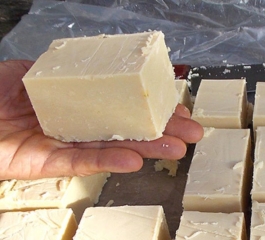Do you want more information on the subject and understand whether mirrors are recyclable and other relevant aspects? So keep reading this article until the end.
History of the mirror
To understand if the mirror is recyclable and how to dispose of it correctly, it is essential to know the story behind this widely used object.
The history of the mirror goes back thousands of years, with the first mirrors created in ancient Egypt around 3000 BC
Subsequent civilizations developed techniques to create mirrors from polishing metals such as copper and bronze to the use of blown glass by the Romans to produce convex mirrors.
In the 14th century, Venice became an important manufacturing centre, using mercury-coated glass for reflection. In the 19th century, the liquid silver method became popular.
Nowadays, companies produce large-scale mirrors with advanced technologies, turning them into common items in our everyday lives and playing an essential role in reflecting images and in various applications.
Is the mirror recyclable?
The complexity of its composition prevents all types of glass from being reused or recycled, despite the fact that glass has a high recycling potential.
In general, glass composed of different substances or manufactured using proprietary techniques makes the recycling process laborious, costly or even impossible.
The mirror is an example of this. Its manufacture involves the application of a layer of metallic silver and rear blades composed of aluminum, tin and plastic, which makes the mirror non-recyclable.
In addition, discarding a broken mirror with other recyclable materials can pose a risk to workers at selective collection cooperatives.
The mixture of chemical elements needed to manufacture mirrors is also harmful to the environment if disposed of incorrectly.
Which makes recycling broken mirrors commercially impractical. Therefore, properly disposing of mirrors is of paramount importance to avoid negative impacts on the environment and public health.
How to dispose of used mirrors?
Properly disposing of used or broken mirrors is extremely important to avoid health risks and negative impacts on the environment.
If the mirror is in good condition and can be reused, you might consider donating it to charities or reuse projects.
However, when dealing with a broken mirror, it is essential to take precautions to avoid accidents, such as protecting yourself by wearing gloves and wrapping the mirror in thick paper or sturdy newspaper to protect the sharp edges.
When disposing of the broken mirror, it is important to separate it from recyclable materials and place it in a sturdy bag, tying it before discarding it in the regular trash.
Avoid mixing it with recyclable materials, as the mirror is not recyclable in most conventional systems.
An additional option is to contact your local municipality or solid waste company for information on specific programs or locations for the proper disposal of broken mirrors.
In some cases, specialist recycling companies may accept used or broken mirrors.
Risks caused by the mirror in the environment
The manufacture and composition of the mirror can pose risks to the environment. Improper disposal of mirrors can cause damage to the environment.
Because the materials used in its manufacture are harmful to the ecosystem.
Broken mirrors discarded in the common trash or in nature can contaminate soil, groundwater and pose risks to wildlife.
Given the negative impacts that mirrors can cause to the environment, it is essential to seek solutions that minimize these effects and promote environmental preservation.
Taking responsible disposal measures and seeking more sustainable alternatives in the manufacture of mirrors are key actions to protect the ecosystem and ensure a healthier and more balanced environment.
Final considerations
In conclusion, the complex composition of the mirror, which involves materials such as metallic silver and aluminum, tin and plastic sheets, makes it impossible to recycle.
If disposed of incorrectly, it can damage the environment, contaminate soil and water, and pose a risk to wildlife.
Therefore, it is essential to carry out proper disposal in resistant bags and separate from recyclable waste.
By adopting conscious practices, we can contribute to environmental preservation and a more sustainable future.


